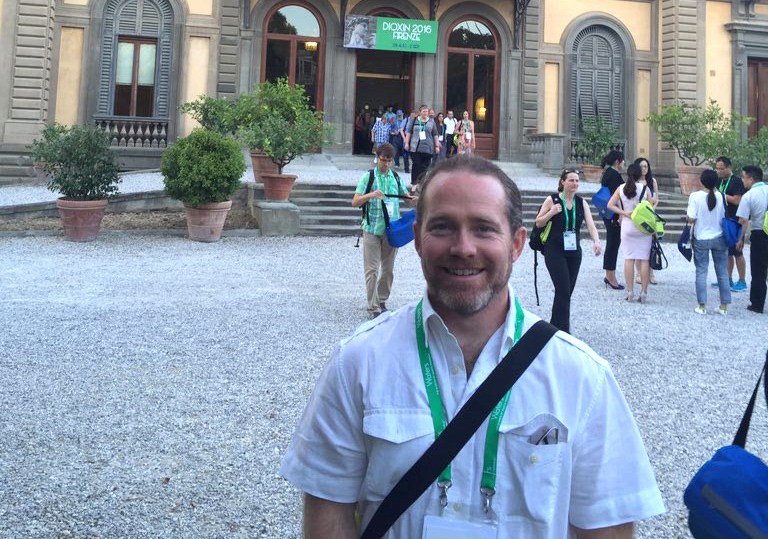This past week, I was able to attend the Dioxin conference in Florence, Italy. The conference is 36 years old, and it was started for the topic of Dioxins. Over the years, the conference has expanded to cover many more contaminants, but today, it mostly covers everything on persistent organic pollutants (POPs).
Obviously, the location of the conference was amazing. It is especially amazing to realize you are in the location that Michelangelo was brought up, lived and worked.
I enjoyed the social part of the conference which included learning about the local Chianti wine (including a tasting) as well as chatting with my fellow colleagues who are involved in these exciting fields of research on POPs.
The conference covered many topics (analytical, monitoring, toxicology, risk assessment) on the many different contaminants that fall under the broad category of persistent organic pollutants. During the conference, I was ask by the organizers to summarize the analytical talks and posters that were presented at the conference. It was quite an honor to be recognized and asked to take on such a task. Especially since there were about 700 delegates attending the conference from all over the world.
Summary of Analytical Topics
On Friday, I presented in the main presentation hall for 20 minutes on the highlights of the conference related to the topic of analytical chemistry. Part of my presentation also included my thoughts on where the future is for persistent organic pollutants analysis and research.
Over 20% of all the presentations and seminars were on analytical topics, so my 20 minutes was easily filled up with content from the conference. These analytical topics covered sampling and sample preparation, inter laboratory studies, non-targeted analysis, bioanalytical and metabolomics and newly developing instrumental techniques. The summary presentation has been uploaded to SlideShare for review and sharing.
Perfluorinated Compounds (PFAs/PFOS)
Every year there is a contaminant that takes the most interest of the researchers. These contaminants are the flavor of the day. This year, the research of perfluorinated compounds (PFAs/PFOS) was by far the most common research topic that was presented at the conference.
These compounds are extensively used and extremely common as contaminants in the environment.
If you are interested in contaminants and don’t know about PFAs/PFAAs, you should get caught up; this will be a very hot area of research, and regulations are eminent for these compounds in the very near future.
Plenary Lecture by Jef Focant
One of the best talks of this year's conference was given by friend and colleague, Jef Focant from the University of Liege, Belgium. Jef gave the plenary lecture on analytical chemistry on Monday afternoon of the conference.
Jef’s talk covered the history of dioxin and POPs analysis from its early days and early researchers. He went through the history to what we are able to achieve now, and he provided a glimpse of what is coming.
Jef’s knowledge of the analytical techniques and their capabilities provided great insight into the background of his slides and talk. I have covered this topic before at the INEF Conference early this year and find it of great interest.
The knowledge about when each of this analytical techniques were developed and when they started to get used for this type of work is very important in understanding the fundamental development of our knowledge of these contaminants. I find myself needing to explain this on many of my expert witness cases to show the parties involved that detection of these compounds was not always a possibility until a certain technology was developed. We did not have the same instrument capabilities in 1970s as we do today.
Dioxin 2017
The conference was great and the ambience at Florence was incredible. Next year, the conference is in Vancouver. Our Canadian contingent has a tough act to follow, but we are up for the challenge. I am on the local organizing committee and helping to arrange a large session on environmental forensics at Dioxin 2017. See you there!


-1.png?width=859&name=Sample%20%231%20(2)-1.png)
.jpg?width=859&name=Archery%20photo%20(3).jpg)